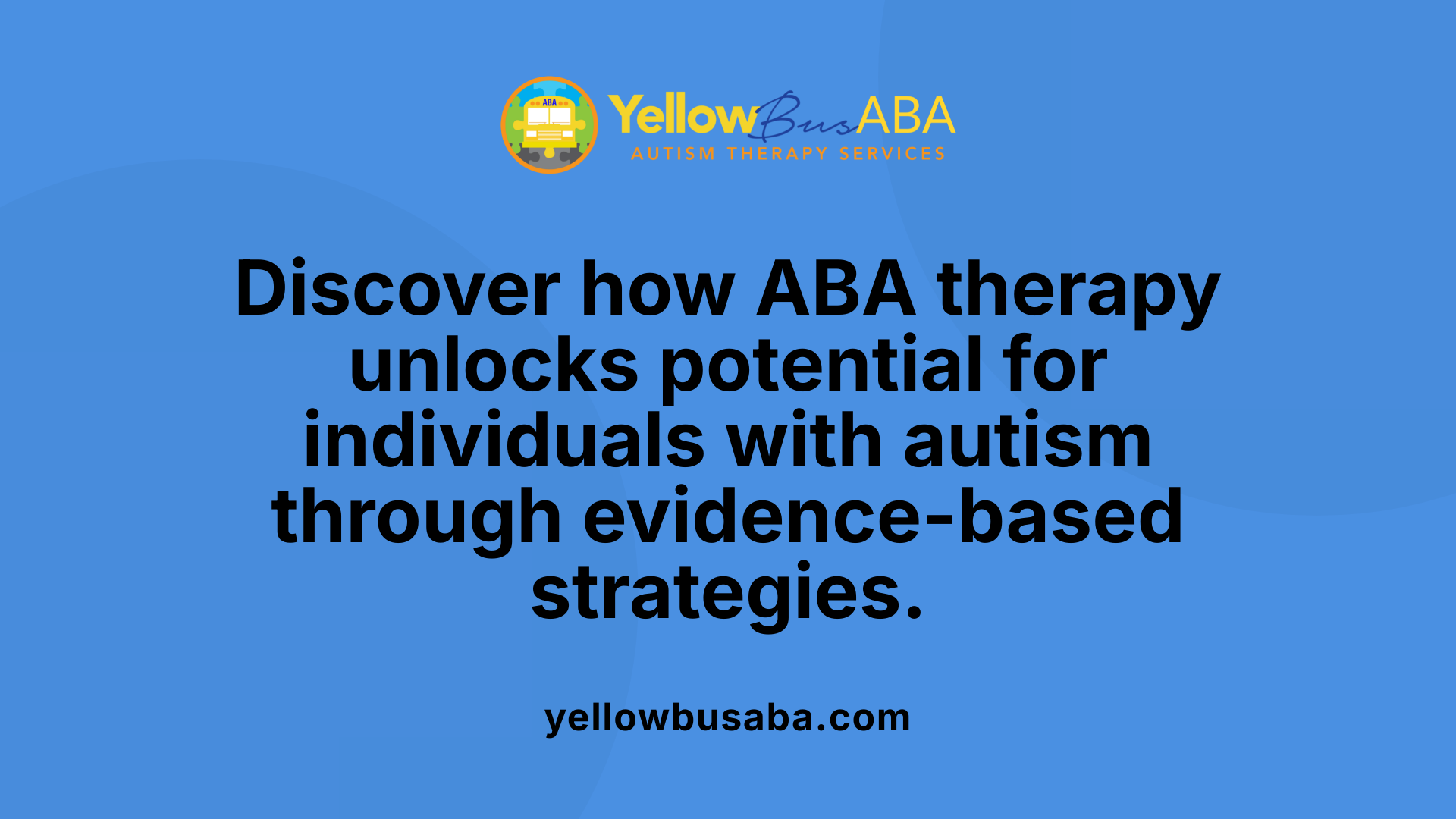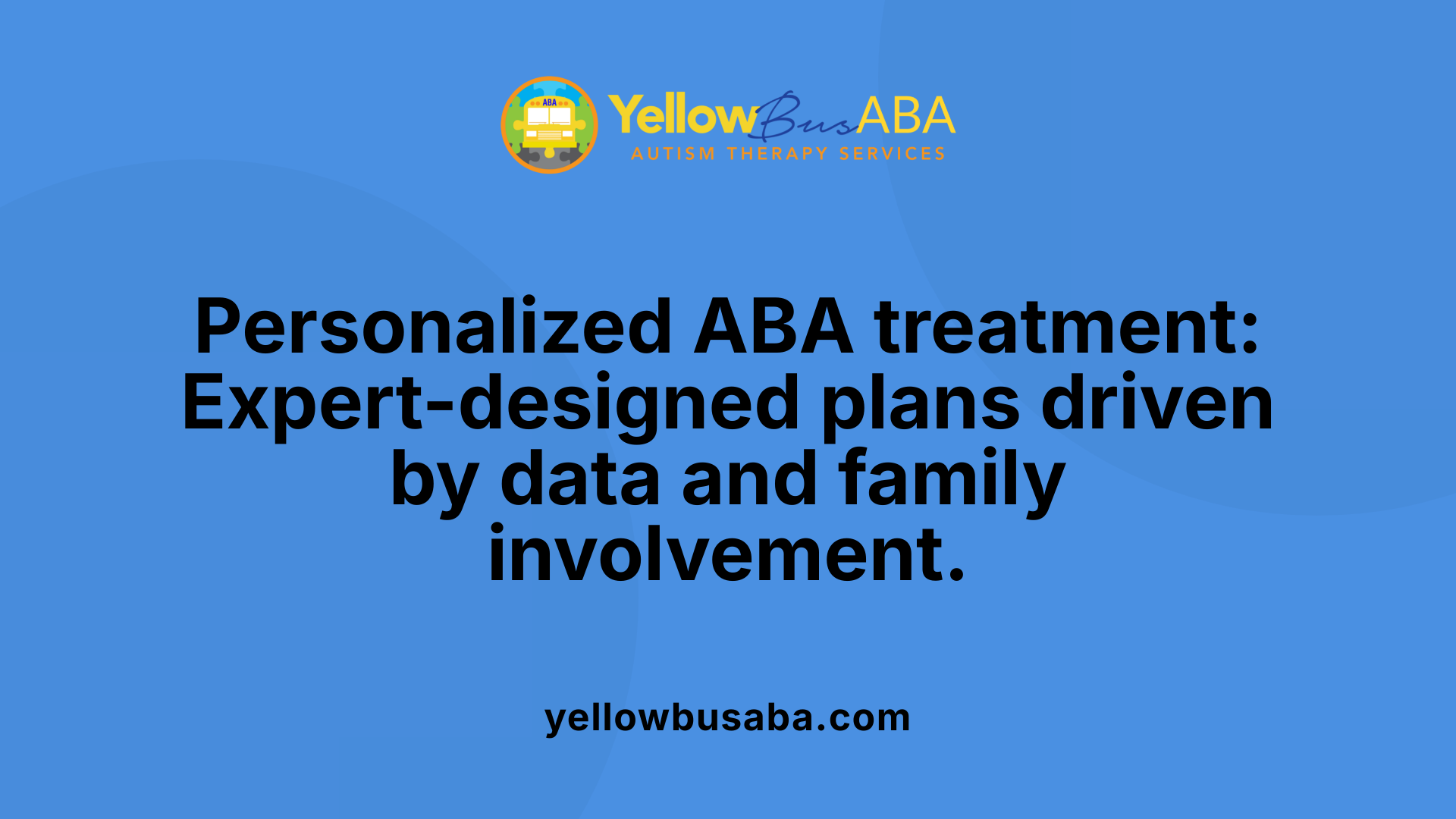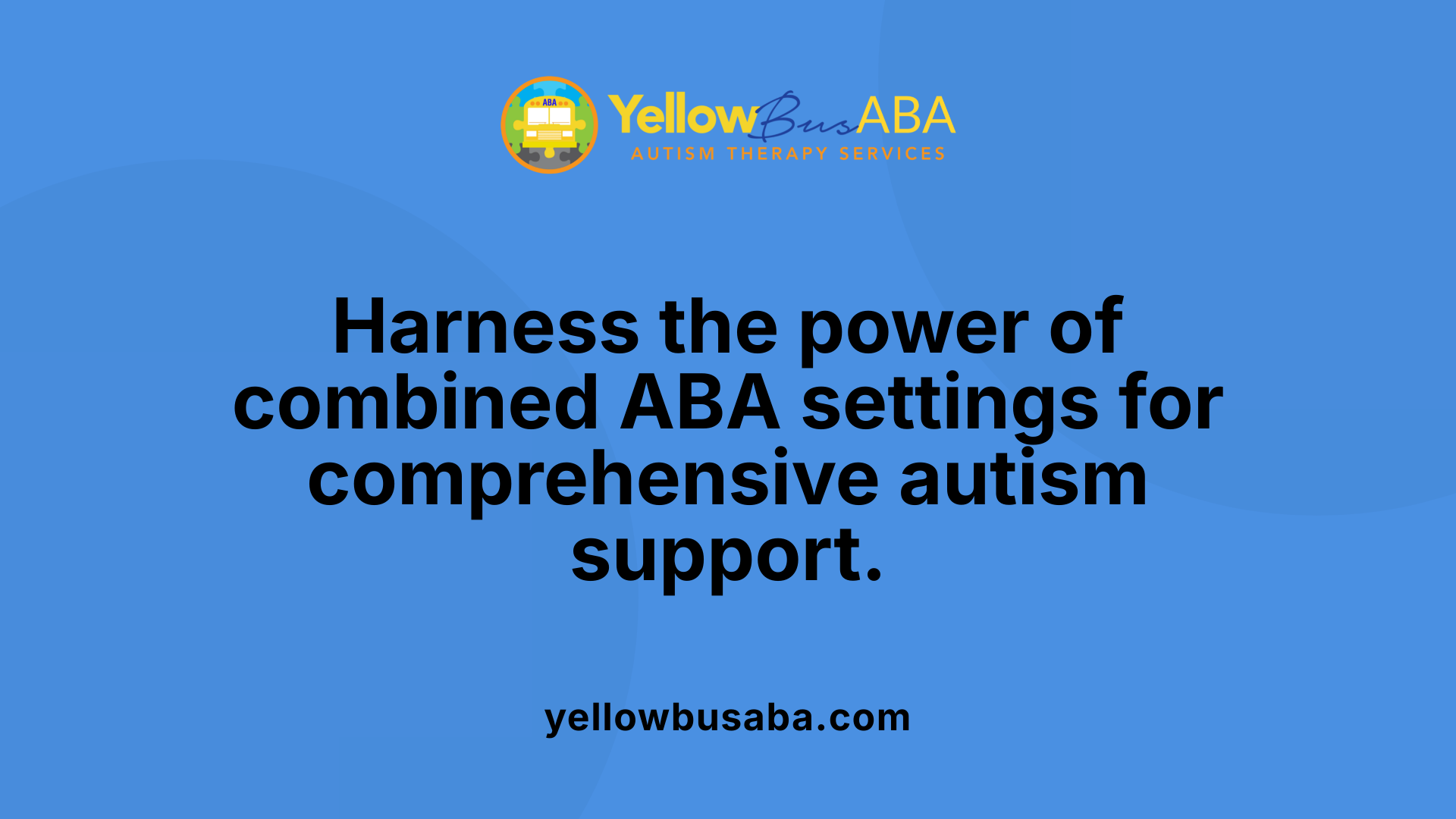Understanding ABA Therapy and Its Dual Settings
Applied Behavior Analysis (ABA) therapy is a scientifically grounded method designed to support individuals with autism spectrum disorder (ASD) by improving communication, social, and adaptive behaviors through individualized, evidence-based techniques. This therapy can be delivered in-home or at specialized autism centers, each offering unique advantages. Combining these two settings can create a comprehensive approach that maximizes therapeutic outcomes tailored to each child's needs and family preferences.
What Is ABA Therapy and How Does It Support Individuals with Autism?

Definition and scientific basis of ABA therapy
Applied Behavior Analysis (ABA) therapy is a scientifically grounded approach focused on understanding how behavior is influenced by the environment. It aims to increase beneficial behaviors and reduce those that may hinder learning or social interaction. ABA is highly individualized, with treatment plans developed by trained professionals, such as Board Certified Behavior Analysts (BCBAs). It is used in diverse settings, from the child’s home to schools and community places, ensuring flexibility in meeting individual needs.
Techniques used in ABA to teach new skills
ABA therapy employs several techniques, including breaking complex skills into small, achievable steps. Therapists use reinforcement strategies to encourage desired behaviors while phasing out prompts over time to foster independence. Common methods include Discrete Trial Training (DTT), which involves structured teaching through repeated trials and positive reinforcement, and Pivotal Response Training (PRT), a more natural, play-based approach that targets essential skills like motivation and communication initiation. Other techniques incorporate prompting, fading, modeling, and behavior chaining, all personalized based on ongoing assessments.
Goals and benefits of ABA therapy for individuals with autism
The primary objectives of ABA therapy are to improve communication abilities, social interaction, adaptive living skills, and independence. It seeks to reduce behaviors that impede learning or social participation. Individuals often experience enhanced language development, better social engagement, and improved daily functioning. ABA’s evidence-based strategies aim to support children and adults with autism in reaching their potential and achieving meaningful progress, which translates to increased quality of life and social integration.
Common behavioral interventions employed
ABA commonly uses structured programs like Discrete Trial Training (DTT), Natural Environment Teaching (NET), and Pivotal Response Training (PRT) to teach new skills. Additionally, interventions such as the Picture Exchange Communication System (PECS) assist non-verbal individuals in developing communication. The Early Start Denver Model (ESDM) integrates multiple strategies for early learners, addressing social, cognitive, and language skills. These interventions emphasize positive reinforcement, behavior modification, and individualized planning based on functional behavior assessments for the best outcomes.
Tailoring ABA Therapy to Each Child and the Role of Qualified Professionals

How is ABA therapy tailored to meet the individual needs of each person with autism?
ABA therapy customization begins with comprehensive assessments conducted by Board Certified Behavior Analysts (BCBAs). These detailed evaluations identify a child's strengths, challenges, interests, and environmental factors, allowing practitioners to design personalized treatment plans. Goals are specific and measurable, focusing on improving areas such as communication, social skills, and daily living abilities.
Data collection is central to this approach. Therapists continuously gather and analyze progress data to assess the effectiveness of interventions. This ongoing monitoring helps optimize therapy by informing adjustments or introducing new strategies as needed. Furthermore, innovative tools like artificial intelligence, augmented reality, and virtual reality are increasingly integrated to enhance engagement and provide real-time feedback.
Parental involvement is another crucial element. Customized strategies often extend to training parents and caregivers, ensuring therapy carries over consistently into daily life and adapts to evolving needs. This individualized, data-driven, and environment-sensitive approach promotes effective and lasting development for children with autism.
Who typically provides ABA therapy, and what qualifications do these professionals have?
ABA therapy services are delivered by a multidisciplinary team led by licensed and certified professionals. The primary credential is the Board Certified Behavior Analyst (BCBA), who holds advanced degrees in psychology or behavior analysis and is certified through the Behavior Analysis Certification Board (BACB). BCBAs design and supervise individualized treatment plans, analyze data, and oversee therapy quality.
Daily interventions are often carried out by Registered Behavior Technicians (RBTs) or similarly trained therapists who work under BCBA supervision. These frontline therapists receive specialized training in ABA techniques to implement sessions effectively.
Supervision is continuous and rigorous. BCBAs manage multiple clients, conduct frequent progress reviews, and guide therapy modifications based on data insights. Families choosing ABA providers should consider staff credentials, commitment to safety, transparency, and dedication to personalized, data-driven treatment approaches to ensure optimal care for their child.
Distinct Advantages of In-Home and Center-Based ABA Therapy

What are the benefits of in-home ABA therapy?
In-home ABA therapy offers several advantages rooted in its natural setting. Conducted within the child's familiar home environment, this therapy reduces the stress often caused by changing locations and unfamiliar surroundings.
This familiar context helps children apply learned skills directly to daily life, especially in tasks related to independent living. Additionally, family members can more easily engage and participate in the therapy sessions, strengthening support and consistency in treatment.
The convenience factor is also significant; families avoid travel time, and therapy can often begin more quickly due to shorter wait times compared to center-based programs.
What benefits does center-based ABA therapy provide?
Center-based ABA therapy takes place in dedicated therapy centers designed to provide a structured, distraction-minimized environment. This space enables therapists to tailor activities specifically to the child's needs without common household interruptions.
A major advantage is the opportunity for social interaction. Children gain valuable experience in peer learning, social skills practice, and navigating group settings, which are essential for preparing them for school and community involvement.
Regular routines in these centers help children adjust to a predictable schedule, supporting skill development in a way that mimics school environments.
How do access and therapy environments compare?
Starting in-home ABA therapy can often be faster due to the flexibility and shorter waiting lists, providing early intervention when it’s most critical.
Conversely, center-based therapy offers a highly organized setting staffed by specialized professionals, which may be preferable for children benefiting from structured routines and peer engagement.
Many families find that combining both approaches over time delivers a more comprehensive therapy experience, matching the child's evolving needs.
| Therapy Type | Environment | Primary Benefits |
|---|---|---|
| In-Home ABA | Child's natural home | Convenience, reduced transition stress, high family involvement |
| Center-Based ABA | Specialized therapy center | Structured routines, socialization opportunities, access to professional teams |
Choosing between in-home and center-based ABA therapy depends heavily on the child's individual needs, family preferences, and treatment goals, aiming always for timely and effective intervention.
Maximizing Outcomes: The Benefits of Combining Home and Center-Based ABA Therapy

How Can Combining Home and Center-Based ABA Therapy Enhance Treatment?
Combining in-home and center-based ABA therapy allows children with autism to reap the advantages of both environments. In-home therapy offers personalized, one-on-one sessions in a familiar setting, which fosters practical skill development and high parental involvement. Meanwhile, center-based therapy provides a structured space with peer interaction and access to a team of specialists, aiding social skill growth and routine building.
What Are Effective Strategies for Transitioning Between Therapy Settings?
Transitions between home and center-based ABA can be carefully planned to ease any anxiety. Gradual shifts, such as starting with home sessions and slowly introducing center visits, help the child adapt to new environments while maintaining therapeutic consistency. Close collaboration between therapists, parents, and caregivers ensures smooth changes aligned with the child’s comfort.
How Can Individualized Treatment Plans Incorporate Both Therapy Elements?
Tailored plans integrate sessions at home and in centers according to the child’s unique needs and family preferences. For example, foundational skills might be introduced at home with parental involvement, while social and group skills are targeted at the center. This blend optimizes development across multiple domains and maximizes learning opportunities.
Why Is Early Start and Family Preference Crucial in Choosing Therapy Settings?
Early initiation of ABA therapy significantly improves outcomes. Families should consider what setting feels most supportive and manageable. Whether beginning in the home for convenience or at a center for social exposure, honoring family preferences ensures sustained engagement and positive experiences for the child.
Combining therapy settings offers a comprehensive, flexible approach that adapts over time, enhancing the effectiveness of ABA interventions for children with ASD.
Family and Caregiver Engagement and Addressing Criticisms of ABA Therapy

How does ABA therapy involve families and caregivers in the treatment process?
ABA therapy actively involves families and caregivers by providing them with training and education that enable them to support their child's skill development and behavior reinforcement. This involvement allows parents to apply behavioral strategies consistently across home, school, and community settings, ensuring skills learned in therapy are maintained and generalized.
Collaborative goal-setting between therapists and caregivers helps monitor progress and adapt intervention plans as needed. Training parents not only fosters skill development but also strengthens the parent-child relationship and builds confidence in managing the child's unique needs. Family participation is therefore critical for maximizing therapy effectiveness and promoting the child's overall growth.
Are there any controversies or criticisms surrounding ABA therapy as a treatment for autism?
ABA therapy faces criticism related to its structured, behaviorist approach. Some argue it may unintentionally suppress natural behaviors, leading to masking and issues such as stress or identity confusion in autistic individuals. When applied too rigidly or with an exclusive focus on eliminating certain behaviors, ABA can cause distress or contribute to trauma-like responses.
Critics stress the importance of individualized, compassionate therapy that respects autistic individuals' self-regulation and perspectives rather than relying solely on reinforcement and correction. While ABA remains an evidence-based and effective treatment, these concerns highlight the need for sensitive, person-centered applications that prioritize respect and emotional well-being.
Overall, involving families in therapy and maintaining ethical, respectful practices are essential to addressing these criticisms and ensuring positive outcomes for each child.
The Complementary Power of Integrated ABA Approaches
Combining home and center-based ABA therapy offers a balanced, flexible, and highly effective approach to supporting individuals with autism spectrum disorder. Home-based ABA delivers personalized learning within familiar environments, fostering independence and reducing stress, while center-based ABA provides a structured setting with peer interaction and professional collaboration. When paired thoughtfully through individualized treatment plans and guided by qualified professionals, these complementary settings maximize developmental progress and quality of life. Active family involvement, timely therapy initiation, and sensitivity to ethical concerns further enhance outcomes. Ultimately, integrating both therapy contexts empowers families and children alike to harness the full benefits of ABA, tailoring interventions that respect individual needs and promote meaningful growth.
References
- In-Home vs. Center-Based ABA Therapy | Autism Resources
- Behavioral Therapy for Autism Spectrum Disorder in Children
- Applied Behavioral Analysis and Other Behavioral Therapies ...
- ABA Therapy In-Home vs At a Center: 5 Key Differences
- Is ABA therapy harmful? The controversy explained
- Debunking 7 Common Myths About ABA Therapy - GSEP Blog
- What to Consider When Looking for a Qualified ABA Provider
- Applied Behavior Analysis (ABA)
- The Role of Caregiver Involvement in ABA Therapy
- Parent Involvement in ABA Therapy






